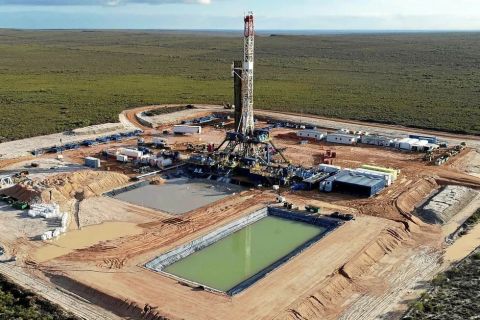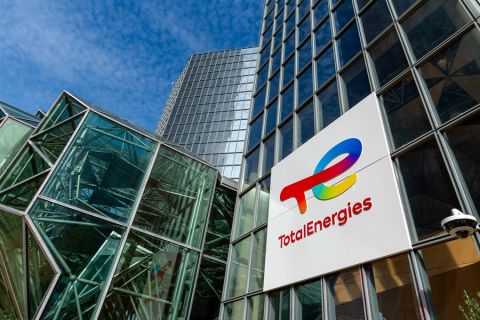2005 marked the fourth straight year of good times for energy investors. While the U.S. budget for the current fiscal year is around $427 billion, the market capitalization for the petroleum stocks in the John S. Herold universe grew by $500 billion by year-end 2005. "Without a doubt, the total wealth generated is both eye-popping and exceeds all previous years," report Herold analysts Robert Gillon and Kathryn Berger in the research firm's annual year-end stock-performance review. The analysts examined 383 companies' total shareholder returns-stock-price gains plus dividends-in 2005 and found that the vast majority outperformed expectations. Of note, 13 stocks tripled in price while 50 doubled. According to the analysts, shareholder returns rose more than 10% in the first quarter of 2005. Third-quarter growth shot up 25%-spurred by spiking gas prices-while fourth-quarter gains dipped when natural gas prices fell. "But the same pattern was evident at the end of 2004," the analysts say. "Three years is a long time for a bull to run, but this one still has fire in its eyes." For a third consecutive year, Canadian E&Ps, integrated oils and royalty trusts outperformed their U.S. counterparts. Connacher Oil & Gas, a new heavy-oil-focused producer, led Canadian E&Ps with 621.5% in total returns in 2005; Husky Energy Inc. was one of the top five integrated oils with total returns of 82.8%; and Canadian Oil Sands Trust's total return topped off at 95.8%. North American producers had size in their favor though, flipping the pattern of the two prior years. Among the super-independents, Nexen Inc. reported a 135.7% return, bumping Canadian Natural Resources to second place. Vintage Petroleum was top dog in the large U.S. producer category with 136%, and Southwestern Energy-which has more than doubled its shareholder returns for three years straight-has climbed up into the next-size category with 2005 total returns of 183.6%. Ultra Petroleum was another North American winner; its returns totaled 131.9%. As a group, the 31 larger independents saw a median return of 59.4%, up from returns reported in the prior year. Maurel et Prom was the only loser (-13.6%). The analysts note that stockholders of Pogo Producing, last year's worst performer in its peer group, are still waiting to see the benefits from the company's restructuring efforts. E&Ps that operate mainly outside of North America lost steam in 2005 following two years of stellar performance, the analysts add. The group reported a total median return of 41.8%. "While we expect that the gap will close, natural gas prices remain low in many other regions and income gains were subdued compared with this continent. Still, significant discoveries remain to be found and developed, and these are richly rewarded...." For the first time in the 10 years the survey has been conducted, all of the integrated oil companies reported gains in total shareholder returns. The median return was 39.1% for 2005-better than several other markets-and market capitalization grew by almost $300 billion that same year. Lukoil Holding was among the top five performers with total returns of 96.1%. The six supermajors didn't do as well, each ranking in the bottom quartile. "Royal Dutch Shell has been the group's doormat for three straight years, but Exxon Mobil and Chevron Corp. could only muster slightly better gains (in 2005)," the analysts report. "Apparently, the market does not think these companies are positioned to boost profits as rapidly as their more aggressive competitors, such as ConocoPhillips." The latter plans to acquire Burlington Resources in a deal valued at $35.6 billon. In the future, the analysts expect the supermajors to become an interesting turnaround story. "They will be the beneficiaries of the sea of liquidity that needs a home now that long-term rates are not appreciably above short-term ones. ConocoPhillips has been rewarded for taking an activist approach, which should encourage others to follow. If that transpires, Burlington Resources will not be the biggest acquisition of the year." In reviewing all 383 companies, year-end gainers included GMX Resources Inc., Arena Resources and Parallel Petroleum Corp., which reported total returns of 416.5%, 224.7% and 215.6%, respectively. Laggards included Torch Offshore (-99.4%) and Heartland Oil & Gas (-89.7%). Heartland's chief executive, Richard Coglon, who led the company through its start-up and development since 2002, announced his resignation in January, to be replaced by Phil Winner. On the service side, suppliers and drillers continued to do well in 2005. Both groups had median total returns of 50%. Gems included Parker Drilling, Pioneer Drilling and service company Lufkin Industries, which reported total 2005 returns of 175.6%, 77.7% and 153.6%, respectively. While the M&A market is still red hot, Gillon and Berger say consolidation activity in 2005 fell short of expectations. They say 21 companies were lost to consolidation last year. "Perhaps the muted pace of acquisitions is due to commodity prices beating expectations, which makes some players hesitant to sell. Or maybe it's easier to strike bargains in the asset market, which is extremely active, than in the corporate arena." According to the analysts, though the number of deals decreased, the total dollar volume was higher last year. In Canada, the M&A game fizzled to just five deals. The analysts note that the acquisitive trusts are beginning to cannibalize one another; two transactions closed in 2005-double the number of 2004-and two more were pending at year-end. Five U.S.-based producers said yes to buyout offers, four less than last year. "Probably more important than the number is the location of the buyers; one was Norwegian and one was Australian. The game gets more international by the year." As for commodity pricing, the analysts expect swings of more than $15 per barrel of oil and $3 per million Btu of gas during the course of the year. They anticipate upstream capital investments will rise about 25%, while service stocks will continue to claw their way upward in the group rankings. "Funds will continue to flow back toward North America, since current profitability is so strong, but this may be happening to the long-term detriment of the industry's reserve base. Remember, the group appreciated by $500 billion (in 2005), but they are going to reinvest nearly that much, and this industry has some considerable risk factors to consider." Meanwhile, they also expect the consolidation pace to pick up once again. "There is so much money pouring in that no other outcome seems logical, even though, as a smart friend once told us, 'Cash makes a man careless.' For what it's worth, that same wise man also told us 'Never put your own money in your own deal.'"
Recommended Reading
Triangle Energy, JV Set to Drill in North Perth Basin
2024-04-18 - The Booth-1 prospect is planned to be the first well in the joint venture’s —Triangle Energy, Strike Energy and New Zealand Oil and Gas — upcoming drilling campaign.
TotalEnergies Cements Oman Partnership with Marsa LNG Project
2024-04-22 - Marsa LNG is expected to start production by first quarter 2028 with TotalEnergies holding 80% interest in the project and Oman National Oil Co. holding 20%.
Is Double Eagle IV the Most Coveted PE-backed Permian E&P Left?
2024-04-22 - Double Eagle IV is quietly adding leases and drilling new oil wells in core parts of the Midland Basin. After a historic run of corporate consolidation, is it the most attractive private equity-backed E&P still standing in the Permian Basin?
TotalEnergies to Acquire Remaining 50% of SapuraOMV
2024-04-22 - TotalEnergies is acquiring the remaining 50% interest of upstream gas operator SapuraOMV, bringing the French company's tab to more than $1.4 billion.
EIG’s MidOcean Closes Purchase of 20% Stake in Peru LNG
2024-04-23 - MidOcean Energy’s deal for SK Earthon’s Peru LNG follows a March deal to purchase Tokyo Gas’ LNG interests in Australia.





